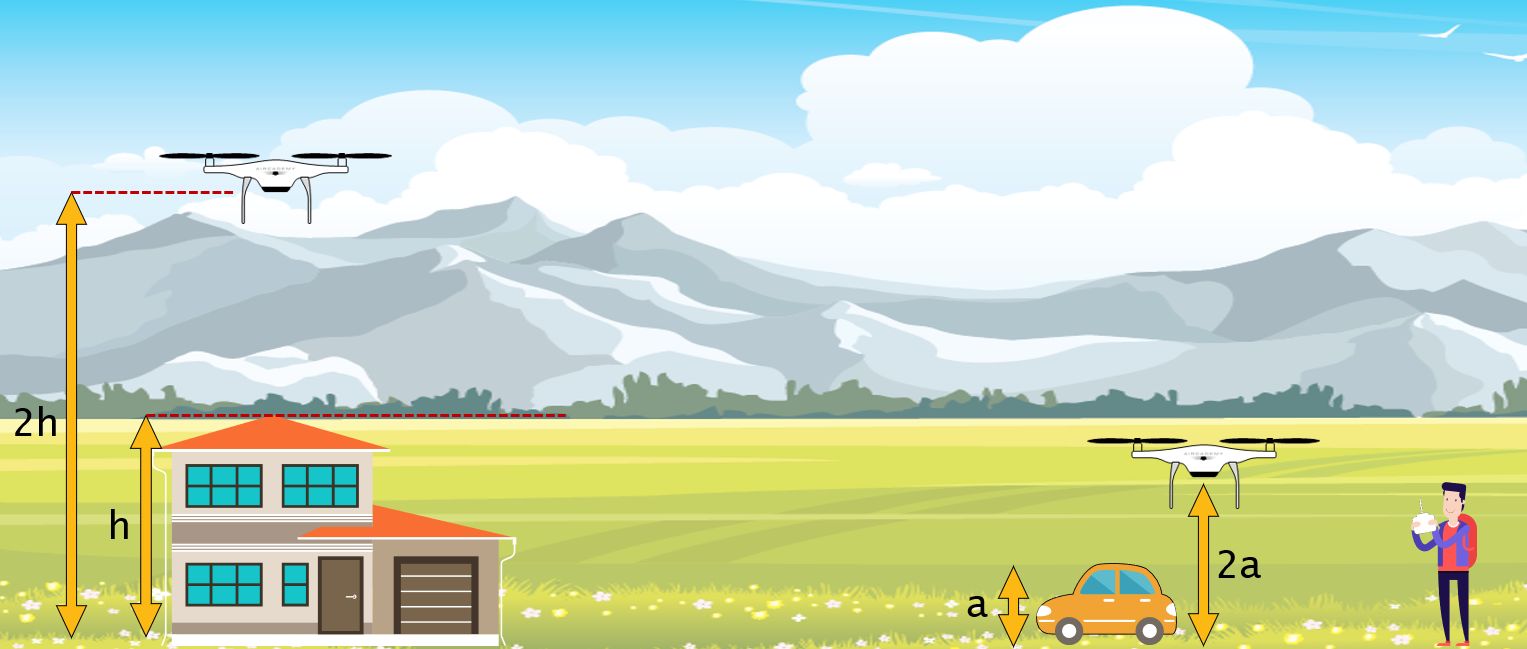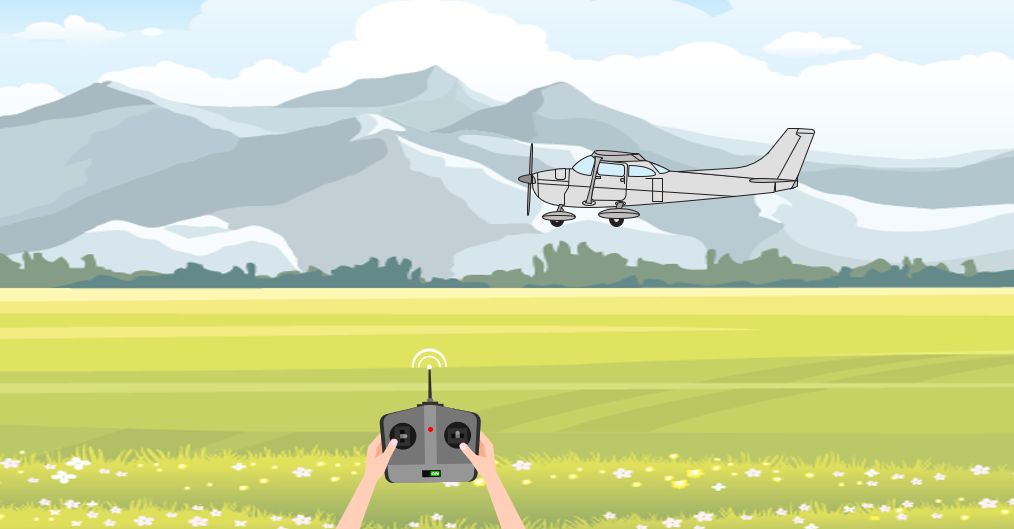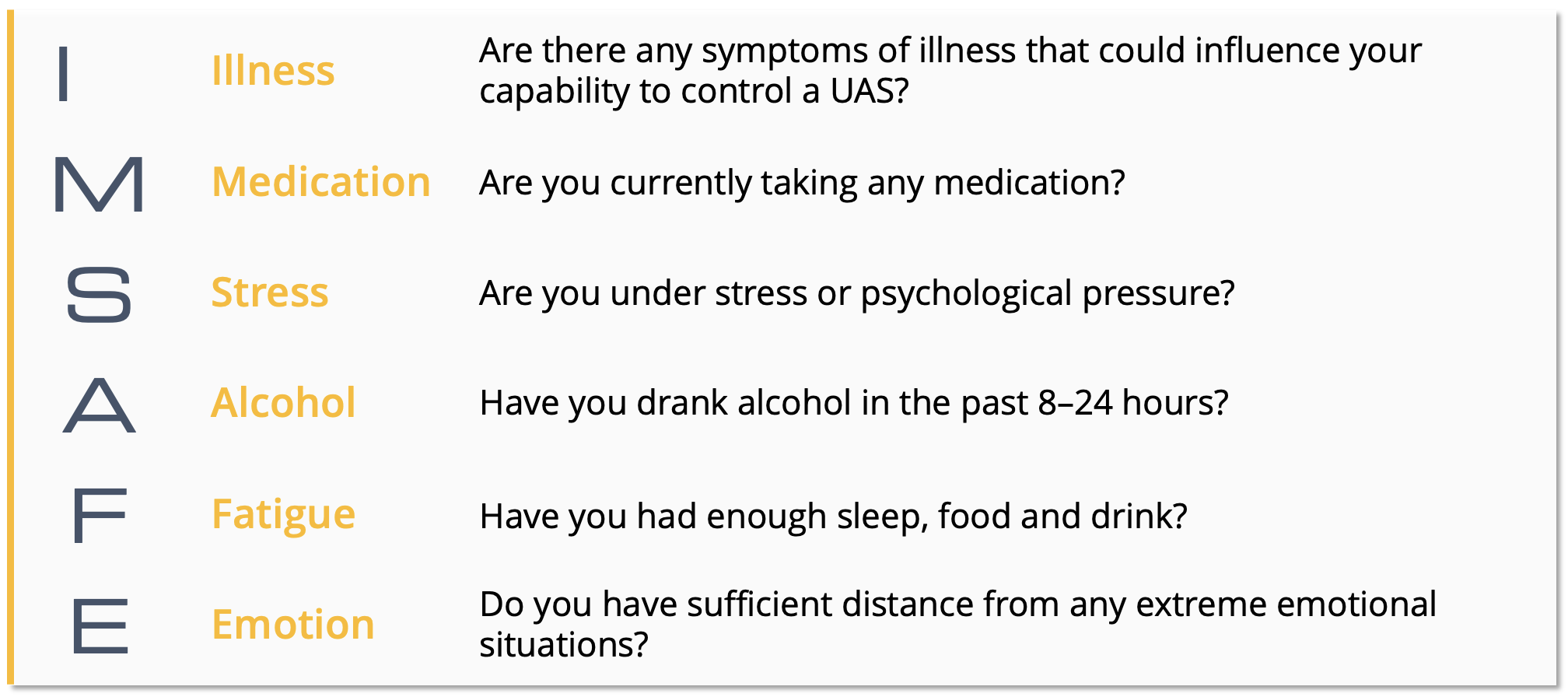Human Perception

The second sub-chapter focuses on the remote pilot’s perception; this perception informs important decisions during flight. The module covers “Situational Awareness”; relevant factors to evaluate flight altitude, distance and speed; and night operations.
Situational Awareness
Before you make any decision as a UAS pilot, first you must assess your environment to get a mental picture of the situation.
Relevant information to note would be the current position and altitude of your unmanned aircraft. For example, is the aircraft close to an airport or restricted airspace?
On this basis, a prediction can be made as to the likelihood of negative consequences, such as trespassing into this restricted airspace. You can then foresee whether you may need to change the direction or the altitude of the UAS.

These steps and processes together are called “Situational Awareness” (SA). “Situational Awareness” means having an “overview” of any situation and being aware of likely outcomes.
Situational Awareness can be influenced by the following factors:
- Personal conditions, such as fatigue, workload, stress and previous experience with a situation
- Environmental conditions, such as visibility, weather, distractions and other flying objects
- System problems, such as the complexity and performance of the unmanned aircraft, the degree of process automation, the persons involved and the human-machine interfaces (HMI), such as the remote control
Altitude and Distance
Estimating the distance and speed of an object can be difficult. When observing an object at close range, we determine the distance using visual perception. This is sufficient when the object is within an arm’s length, and can be very accurate. However, as the distance increases, this estimation becomes increasingly unreliable.
Visual perception cannot measure large distances with accuracy; therefore, you must also rely on subjective evaluations based on experience and knowledge.
This means comparing the size of an object with a known point of reference (for example, a familiar car). An unmanned aircraft is a very small object; estimating its distance is difficult and often influenced by misconceptions.

In order to estimate the flight altitude of an unmanned aircraft which is further away, a known object on the horizon – such as a house or a tree – can be used as a point of reference. This is only reliable if the actual height of the reference object is known and both objects (UAS and reference object) are approximately at the same distance from the observer.
Ultimately, it is safe to assume that there may be a significant discrepancy between your visual perception of distance and flight altitude and the actual position of the unmanned aircraft.
Even if you know your own position and the position of an airspace or traffic pattern of a nearby airport, it is still difficult to estimate the precise position of the airspace boundary. Without significant references on the ground – for example, motorways or rivers – there is a high risk of flying into a restricted airspace or coming closer than the permitted minimum distance to other objects in flight.
Therefore, be careful at all times. If you have access to technical systems which determine this data (e.g., GNSS signals or altimeter feedback) you should use and trust this information above all else.
It is also important to take into account the height of clouds. If an unmanned aircraft is operated near clouds, visibility can be impaired and the response time to avoid an air collision may be insufficient!
Clouds can also influence our perception of altitude and distance, as can other atmospheric conditions, such as:
- moisture,
- smoke or other particles and
- solar radiation.
Velocity
In order to estimate the speed of another object, for example a helicopter or military aircraft, we need reliable judgement. This depends on various factors, and experience plays a major role in this.
Previous observations of regular air traffic can give an idea of the speed of other objects and the time it takes to reach a particular position. Without such references, or in the event of incorrect estimations (e.g., misjudging the type of aircraft), dangerous situations can quickly arise.
Direction of travel is also a decisive factor in the assessment of air traffic. In general, it is easier to estimate the speed of objects which move exactly from left to right or right to left; such traffic is often not a risk factor.

It is much more difficult to estimate the speed of flying objects approaching from directly ahead or at an angle. There is also a big difference between an approaching propeller plane and a military fighter jet; however, this difference often cannot be seen straight away.

Darkness
In the dark it takes up to 30 minutes for the eyes to adjust to their surroundings. Without this adaptation, the recognition and identification of objects is significantly limited. On the other hand, once your eyes have adapted to darkness, bright light should then be avoided.
There are several factors that affect night vision ability:
- Different colours of light can give different impressions of distance. Green light appears brighter than red light, which can give the impression that the green light source is closer. Red light, on the other hand, appears darker and gives the illusion of being further away.
- Carbon monoxide poisoning caused by smoking or inhalation of exhaust gases can negatively affect night vision due to what is known as “anaemic hypoxia”.
I’M SAFE Checkliste
In conclusion, as a remote pilot you absolutely must be aware of the effects of limited physical or mental performance.
Many factors directly or indirectly influence your performance and thus your ability to control an unmanned aircraft. Do not underestimate your responsibility towards your environment! Be honest with yourself and go through the “I”M SAFE” checklist before every flight:

Content by AIRCADEMY
Graphics / Photos:
Anika Huizinga on Unsplash, Natuska/Depositphotos.com, kondratya/Depositphotos.com, ArthurBalitskiy/Depositphotos.com, Zodchiy/Depositphotos.com
